You might find yourself wondering if your AeroGarden is a good fit for growing sage, an herb cherished for its culinary and medicinal properties. Initially, it seems straightforward—minimal space, controlled environment—but there’s more to ponder.
So, does Sage grow well in Aerogarden? By exploring how sage reacts to the stable yet artificial environment of an AeroGarden, you’ll uncover insights that could influence not just the health of your sage, but potentially the flavor of your dishes as well. Let’s delve into what it takes to optimize your AeroGarden for sage.
Understanding Sage’s Basic Needs
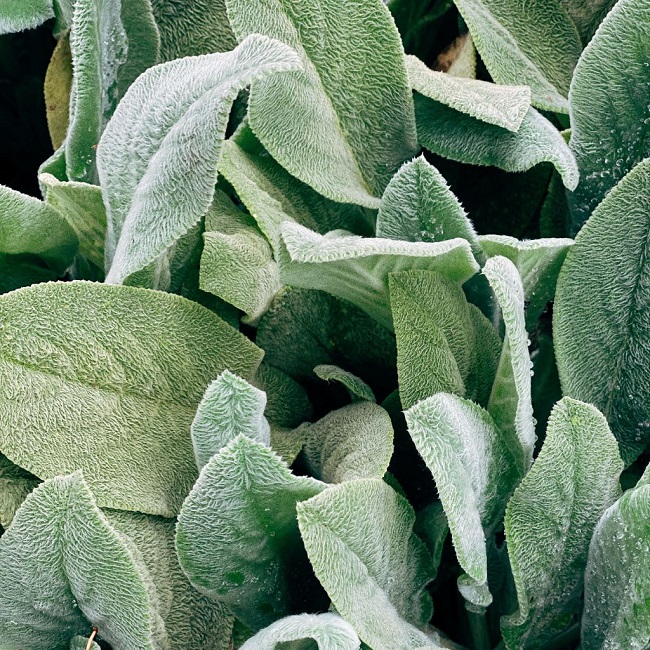

To ensure your sage thrives in an AeroGarden, you first need to understand its basic requirements for growth. Sage, a key component of the Herb Lovers Seed Pod Kit, demands specific conditions to flourish. It’s important that you master these needs to exert control over its growth and promote robust, flavorful leaves.
Firstly, sage is an herb that, once established, shows a strong preference for drier conditions. It’s essential you allow the growing medium to dry slightly between watering cycles. Over-watering can lead to root rot, which drastically affects the plant’s health. You’ll need to strike a balance—moist but never soggy.
Secondly, while sage appreciates light, excessive direct exposure in an AeroGarden can be detrimental. Position it in a way that it receives ample, but not overwhelming, light. This herb’s growth is ideal under moderate light conditions, making it perfect for indoor hydroponic environments like the AeroGarden.
Lastly, regular pruning not only maintains the desired shape and size but also encourages denser growth. Prune your sage to keep it compact and prevent it from overstretching. This practice will also promote the growth of new, flavorful leaves, maximizing your harvest.
Setting Up Your Aerogarden
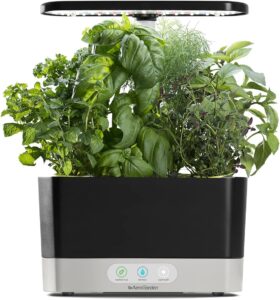

Now that you understand Sage’s basic needs, let’s set up your AeroGarden for ideal growth.
- First, choose the right pod type. Opt for the Herb Lovers Seed Pod Kit, which includes sage, making sure you’re starting with a seed blend designed for your system.
- Next, it’s important to arrange your AeroGarden pods correctly. Place the sage pod in the center of your AeroGarden, as sage can grow quite tall and bushy. This positioning prevents overcrowding and allows ample airflow around the plant, promoting healthy growth.
You’ll also want to confirm your AeroGarden has the necessary accessories. Check if you have a model with adjustable grow lights, as controlling light exposure is key, albeit specifics on light settings will come later. Make sure you’ve got the AeroGarden Hydroponic No-Rinse Cleanser for cleaning without damaging your system.
 AeroGarden Harvest with Gourmet Herb Seed Pod Kit
AeroGarden Harvest with Gourmet Herb Seed Pod Kit Easily cultivate indoor gardens with the AeroGarden Harvest. This hydroponic system supports six plants up to 12 inches tall, thriving in water without soil mess. Its 20W LED grow light accelerates germination, mimicking sunlight. The touch-sensitive control panel simplifies monitoring, reminding you to add water and plant food. Complete with LED grow light system, power adapter, plant food, and Gourmet Herb Seed Pod Kit, it's all you need for vibrant indoor greenery. Start your hassle-free gardening journey today!
- Indoor gardening made easy with AeroGarden Harvest, eliminating soil mess.
- Year-round harvests regardless of outdoor conditions.
- Compact countertop design accommodates six plants.
- Accelerated growth thanks to the 20W LED grow light.
- Higher upfront cost compared to traditional gardening methods.
- Reliance on electricity for the LED light increases energy consumption.
- Limited plant variety may be restrictive for some users.
Optimal Conditions for Sage
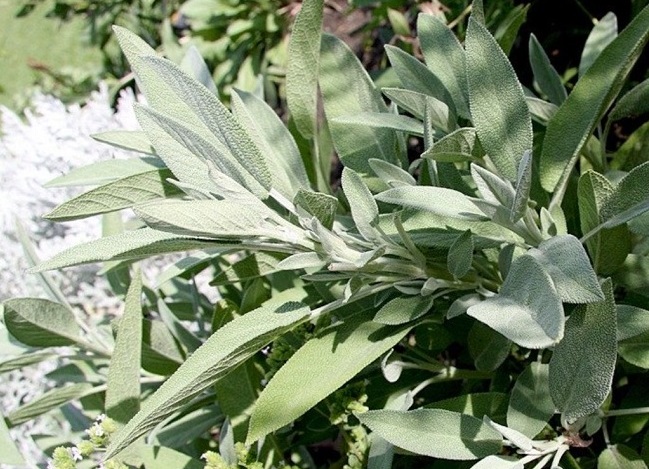

Cultivating healthy sage in your AeroGarden requires attention to several key factors:
- Lighting: Aim for 6 to 8 hours of light daily. Natural light supplements built-in grow lights, supporting optimal growth. Mimic the natural light cycle for best results.
- Temperature: Maintain a temperature range of 65 to 70 degrees Fahrenheit. Monitor and adjust your AeroGarden’s ambient temperature as needed to create an ideal environment.
- Watering: While AeroGardens automate hydration, adjust settings to mimic drier soil conditions preferred by sage. Prevent waterlogged roots by providing minimal moisture.
- Air Circulation: Good airflow promotes healthy growth and prevents disease. Optimize air circulation around your sage by adjusting plant placement or AeroGarden positioning as necessary.
Common Challenges and Solutions
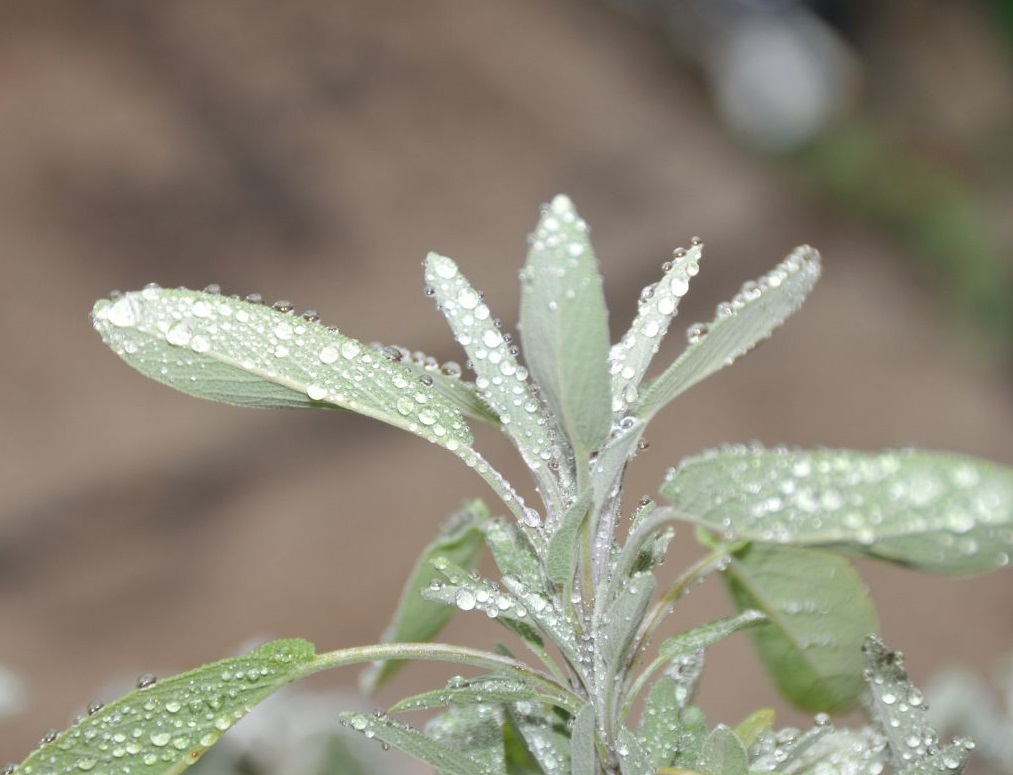

Growing sage in an AeroGarden presents unique challenges, but with the right strategies, you can overcome them effectively.
One common issue you might face is insufficient light, as sage requires plenty of it to thrive. Make sure you’re positioning your AeroGarden in a spot that mimics the intense light sage would naturally get outdoors. If it’s still not enough, consider adding an AeroGarden grow light to boost light exposure.
Another challenge is overcrowding. Sage plants can become quite bushy, and in the confined space of an AeroGarden, they might compete with neighboring plants for space and nutrients. You’ll need to prune your sage regularly to manage its growth. This isn’t just about maintaining aesthetics; it’s important for air circulation and preventing moisture-related diseases.
You might also encounter issues with nutrient balance. Sage isn’t very demanding, but it does need specific nutrients to develop its robust flavor. Use AeroGarden’s recommended nutrients, but monitor your plant’s response. If the leaves look weak or pale, a slight increase in nutrients might be necessary. However, be cautious not to overdo it—too much can harm your sage.
Harvesting and Using Aerogarden Sage
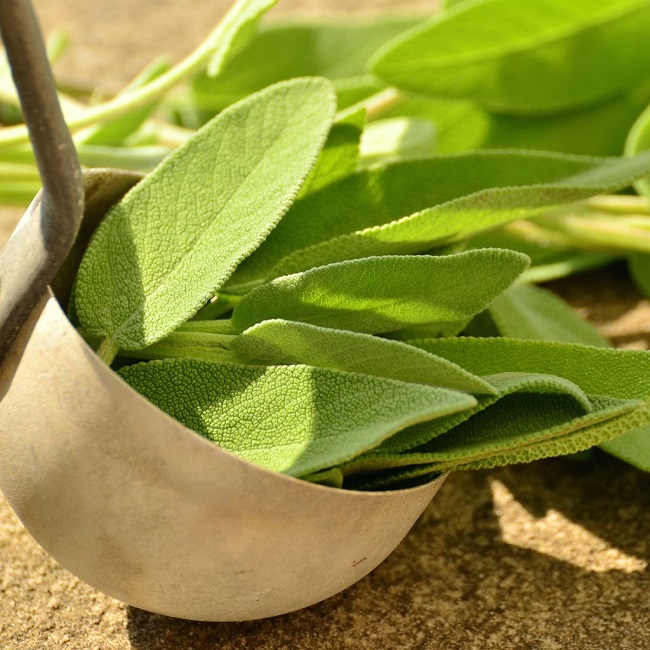

Harvesting your AeroGarden sage at the right time enhances its flavor and medicinal properties.
- Start harvesting leaves when your plant reaches 6 to 8 inches, typically around 21 days after planting, to enhance leaf production and essential oil concentration.
- Trim the top leaves initially to promote bushier growth rather than just vertical growth.
- Utilize freshly harvested sage to enhance various dishes with its robust flavor, perfect for stuffing, seasoning meats, and flavoring sauces.
- Alternatively, dry the leaves for prolonged storage by laying them on a clean, dry surface in a well-ventilated, shaded area, then store them in an airtight container for future culinary endeavors.
Conclusion
So, you’ve seen how well sage can thrive in your AeroGarden with the right setup and care. By managing light, temperature, and water, you’re set for a bountiful sage harvest.
Remember to prune regularly and keep an eye on the nutrients. Soon, you’ll be enjoying fresh, flavorful leaves right from your kitchen.
Whether you’re seasoning dishes or storing dried leaves, your AeroGarden sage is sure to elevate your culinary creations. Happy gardening!




Konnichiwa! (Hello!) I'm Pat Tokuyama, a Japanese tofu cookbook author, who travels for music, food, and adventure. If you like Japanese tea, checkout some of the newestorganic japanese tea, matcha bowls and noren and more!
** Curious about the Plant Based Japanese Cooking Club? ** Learn more here!